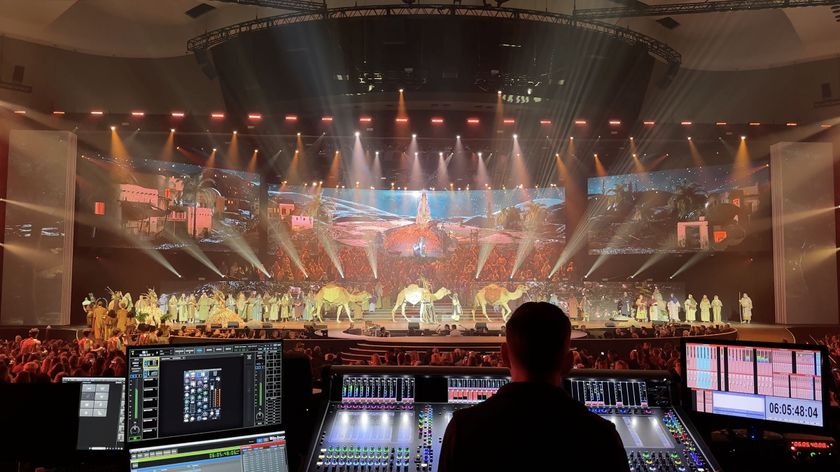The push toward more immersive, interactive display technology has companies asking AV experts to not only specify and install equipment, but manage everything associated with it as well. And, while a lot of this may be new territory for many, the potential for both consultants and contractors to cash in on this is very real.
“We are still seeing further adoption of video in the enterprise globally,” said John Zettel, CEO at AVI -SPL in Tampa, FL. “We expect that to continue, and we see it spiking in different verticals.” He noted that for his company, the healthcare, hospitality, and energy markets are particularly active in this area.
For Mark Coxon, display solutions specialist at Horizon Display, content creation offers a considerable growth opportunity—especially when it comes to digital signage. “Content and context are the only things that assure ROI on a digital signage investment, so providing a path to engaging and relevant content is key for both the integrator and the end customer,” he said. After all, most consumers already have a high-definition screen in their pocket that they can use to access any content they want. “So the question is: How do you get them to watch yours? Rich media, interactivity, and a call to action are key.”
The challenge in this is keeping content fresh, and therein lies the opportunity, according to Bob Caniglia, senior regional manager for eastern North America at Blackmagic Design. “Systems integrators can do a few things, whether they create a department themselves to do this, or liaise with companies who create material but don’t have the ability to deliver it,” he said. These types of partnerships, he said, could produce recurring revenue streams for AV companies. “I think there is a way for them to have ongoing interaction with their customers and provide monthly services. That gives them a better revenue stream and also keeps them more involved with their customers, and the more you interact with your customers, the better chance you have of doing more business with them.”
Caniglia concedes that one of the technical challenges in becoming involved in content delivery is dealing with all of the file formats. “There are always new file formats that seem to come in, and there are more devices to allow the ability to change any format into any other format,” he said. “And when you have this content, it really needs to be displayed in the best way possible—whether that’s changing aspect ratios, file formats or what have you.”
What makes the issue of file formats pricklier is that, according to Caniglia, they are often misrepresented. “People hear the term ‘4K’, but what does that really mean? Is it compressed 4K? Not all 4K is created equal,” he said. “There are so many times that people lay a buzzword on something, and you need to dig deeper. And systems integrators have to sift through it, because they may end up having to educate their end users that oftentimes, a lower resolution uncompressed produces a better result than the higher resolution that has massive compression.”
The opportunities surrounding video don’t stop at content creation and delivery, however; these days, consumers want to gain control over the content they are watching. “This leads into using multitouch and gesture control to let the consumer access the content that is relevant to them, and providing deeper layers for those who want to learn, or engage more in the user or brand experience,” Coxon said. He noted that while gesture control can still be tricky in multi-user environments (for example, if there are too many people waving at the display at the same time), multitouch features less of a barrier to participation, encouraging engagement and, thus, buy-in.
Near-field communications offer another significant growth opportunity, Coxon noted. “Imagine digital signage that can access the apps installed on the phone of the person standing in front of the display to create a content profile that matches the user device,” he illustrated. He added that near-field communications are becoming increasingly relevant in building management systems: “Now the NF C device can unlock doors, provide access to secure areas, and track movements of employees, visitors, and consumers on a scale GPS is not capable of to determine behavior patterns.”
And, as Sean Goldstein, vice president of marketing at Crestron Electronics, points out, with near-field communications, users almost always have what they need to activate this technology: their phones. “One of the nice things about the system is that it will allow users to reprogram their own actions, ” he said. At an enterprise level, this enables organizations to trigger personal settings on a room-by room basis, he added. “This technology makes it possible to instantaneously know who a user is, where they are, and the device they are interacting with to activate an automatic action accordingly, opening up a wide array of options in personalized control that were not previously feasible. Users can trigger personalized control settings, including audio/video presets, lighting levels, room temperature, shade positions, and more, when their smart device is within proximity of the NFC tag.”
Zettel noted that because these systems have pushed AV integrators into the IT realm, the need to stay on top of the technology—and how clients want to apply it—is paramount. “We want to be sure that we stay on top of that by being in close communication with not only our supplier partners, but also with our customers to see what the market is asking for,” he said. It’s also crucial that AV integrators delivery topnotch work in, what is for many, relatively unfamiliar territory. “As we move into that IT world, and as we move into more complex solutions, there is a danger that the quality of work that our industry provides could present pockets where some of the work that is done is substandard, which devalues our industry as a whole. We have to be very careful that the good doesn’t get brought down by the not-so-good.”
Carolyn Heinze is a freelance writer/ editor.
Business Trends
Mark S. Valenti
President and CEO,
The Sextant Group
Pittsburgh, PA
- * I fear for continuing malaise in the marketplace, generally speaking, following the 2012 elections. Taxes, healthcare, you name it, there’s still a fair amount of uncertainty out there.
- * I do believe there are some pockets of opportunity: a.) Our core business in higher education remains strong. b.) I see an emerging market for advanced AV in healthcare. c.) There is some genuine client interest and opportunity in the nascent smart buildings marketplace.
- * Project schedules continue to compress and are causing us to rethink our design and project delivery processes from the inside out.
- * There is genuine interest emerging in Integrated Project Delivery. How AV plays a role in this new business model is yet to be defined. All said, I am guardedly optimistic that 2013 will be our best year ever.
Kelly McCarthy
President, Genesis Integration
Edmonton, AB, Canada
* Customer is king. Never has there been a time when this more true. Can your company do such an exceptional job that the customer wants you more than he wants the lowest price?
* Partnering is the key to prosperity. Technology is consolidating in the IT department of most companies. Partner with an IT company to get access to customers and budgets. IT professionals are also very comfortable with going directly to manufacturers when they want something done. AV companies need to learn how to partner with their own vendors whom they often treat as the enemy and vice versa.
* Culture beats strategy. I didn’t say it, Henry Ford did. It is essential to have great people who are engaged or you will put the happiness of your customers at risk. Also remember that the brain trusts of most AV companies is quickly approaching retirement age. Get your succession plan in place and make sure you have the culture that draws the top young performers.
* The sickness that is entitlement has not been cured and government debt worldwide has not gone away.
Audio and Video Trends
Brock McGinnis
Systems Division Sales Manager, Westbury National Show Systems
Toronto, ON, Canada
We’re beginning to think there will be so much demand for converting legacy RGBHV and VGA twisted pair systems to digital video we may not actually need any new AV clients next year. Nominally its because of the 2013 analog (VGA) sunset but the real driver is that its just no longer socially acceptable in today’s “HD” world to make low resolution presentations on 4:3 screens. And everyone’s completely fed up with all the EDID and HDCP handshake problems.
Videoconferencing use continues to accelerate and a lot of our clients are looking at ways to extend their room systems to desktops and mobile devices, as well as integrate their legacy rooms systems with WebEx, GoToMeeting, and other web conferencing services.
So, despite all the price pressure from consumer devices and technologies, its still a great time to be an AV integrator!
Jimi Gonzalez
Technology Group Manager, ION Electric
Cooper City, FL
2013 is likely the year when the Apple’s newest “disruptive” product will be released, the television. Think about the how Apple has changed systems integration by introducing products (phones, tablets, personal music players) that we don’t even traditionally sell. Perhaps an Apple iTV will help add some margins back into the display market, but the real impact is going to be in control. How the Apple TV interface and control will work is pure speculation at this point, but if they improve the experience and we’re able to integrate the solution, it could lead to some great upgrade opportunities with corporate and hospitality customers.
Ben Bausher
Senior Consultant, Audio & Video Systems Group, JaffeHolden
Norwalk, CT
The biggest area of design that we’re seeing attention focused on is a much larger concentration on assistive listening systems. A little over a year ago, TheNew York Times ran an article about induction loop-based systems, and now the topic is at the forefront of the discussion, especially with government and state-run projects.
Dave Rat
President, Rat Sound
Camarillo, CA
The importance of covering the desired acoustic spaces as evenly as possible is well established, I see a continuing trend focusing on the importance of not aiming sound at undesirable surfaces. In fact in many cases, keeping sound off of walls, ceilings, and other non-coverage areas is more important for optimizing intelligibility than maximizing fidelity. I believe advances in beam steering will increase significantly.
Networking Trends
Joey D’Angelo
Vice President,
Charles M. Salter Associates San Francisco, CAIf you can use a network switch to do it...you will!
Kevin Gross
Media Network Consultant, AVA Networks
Boulder, COAudinate will reap benefits of reaching a tipping point with Dante adoption. This is due to Dante having been shipping longer and ability to use readily available network equipment. It really does take time for an interconnect to establish itself in our industry. We certainly saw this with CobraNet. AVB can’t make it far up this adoption curve until certified switches and endpoints are readily available.
Want Some Services With That Video?
As companies step up their use of video communications, the need for services to go along with the technology is continually on the rise. For John Zettel, CEO at AVI-SPL, offering managed services is the next step. “That’s a big platform of opportunity,” he said. “As enterprise-wide adoption of video continues, and more devices and display devices are brought to the table, managed services are going to be a critical component of that.”
—C.H.










